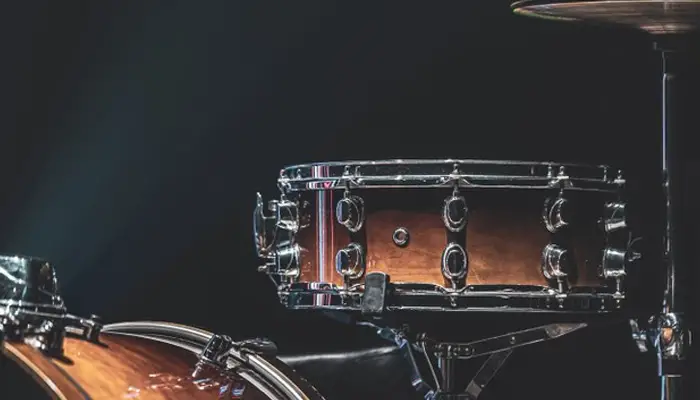
What are piano keys made of? Have you ever wondered what materials make up piano keys?
It’s a question that sparks curiosity and fascination among many, and rightly so.
Let’s delve into the intricate world of piano key construction, exploring not only the materials used but also the rich history behind these iconic components of the piano.
So, what are you waiting for? Let’s get started!
Table of Contents
Understanding Piano Key Composition
Piano keys are meticulously crafted using a diverse array of materials, each chosen for its specific role in enhancing the instrument’s performance and playability. While wood forms the foundational element of piano keys, providing structural integrity and resonance, contemporary keys are often encased in a layer of plastic. This plastic coating not only ensures a smooth surface for effortless play but also prevents fingers from sliding off during intense performances.
In addition to wood and plastic, piano keys may incorporate other materials such as metal and glass, albeit less frequently. These supplementary materials serve various purposes, from adding decorative flair to enhancing specific aesthetic qualities of the instrument, contributing to its overall allure and sophistication.
Tracing the Evolution of Piano Keys: From Early Innovations to Modern Mastery
To truly grasp the significance of piano keys, one must embark on a journey through their rich historical evolution. Originating from the visionary work of Heinrich Engelhard Steinweg, the inventor of the modern piano, these keys have undergone remarkable transformations over the centuries. Steinweg’s groundbreaking contributions led to the development of the grand piano, characterized by the standard keyboard layout of 88 keys—a design that has withstood the test of time.
While the fundamental design of piano keys has remained steadfast, the materials used in their construction have evolved significantly. From the traditional trio of wood, ivory, and metal to the contemporary preference for durable and cost-effective plastics, each era has witnessed its own innovations and challenges in key material selection.
Advancements in Key Materials: Balancing Tradition with Innovation
The evolution of piano keys mirrors broader trends in material science and manufacturing technology. Early pianos relied on a blend of organic and metallic components, prized for their exquisite craftsmanship and tonal quality. However, as demand soared and environmental concerns mounted, traditional materials gave way to more sustainable and versatile alternatives.
Plastic emerged as a frontrunner in modern piano key construction, offering unparalleled durability, affordability, and versatility. Yet, this transition has not been without controversy, particularly regarding the ethical implications of ivory usage. While ivory keys evoke a sense of timeless elegance and sophistication, their procurement raises ethical and environmental concerns, prompting a shift towards more ethically sourced and environmentally friendly materials.
Guiding Your Key Selection: Navigating Choices with Confidence
Choosing the ideal material for your piano keys requires careful consideration of various factors, ranging from personal preferences to ethical considerations. Plastic keys, prized for their longevity and affordability, represent a practical choice for many contemporary pianos, ensuring years of reliable performance without compromising on quality.
Conversely, ivory keys exude a sense of luxury and prestige, appealing to those seeking a touch of timeless elegance in their instrument. However, the limited availability and ethical concerns surrounding ivory procurement may deter some enthusiasts from opting for this traditional material, prompting them to explore alternative options that strike a balance between aesthetic appeal and ethical responsibility
Conclusion: What are Piano Keys Made Of
In essence, piano keys serve as tangible symbols of innovation, craftsmanship, and artistic expression. From their humble origins to their modern incarnations, these keys embody the enduring legacy of the piano—a timeless instrument that continues to captivate hearts and minds across generations.
By embracing the rich history and diverse materials that comprise piano keys, we gain a deeper appreciation for the instrument’s enduring legacy and cultural significance in the world of music.
We hope now you understand what are piano keys made of. Meanwhile, you can also check out 16 Best Acoustic Piano for Beginners and How Many Keys are on a Piano.
Frequently Ask Questions
Are piano keys made of ivory or plastic?
The material of piano keys depends on the age and type of the piano. Older models may feature ivory keys, while most modern pianos utilize plastic keys for their construction.
What materials are commonly used in making piano keys?
Piano keys are typically crafted from a combination of wood and plastic. Other materials such as metal and glass may also be used, though less frequently.
How long do piano keys last?
The lifespan of piano keys varies depending on the material and usage. Plastic keys can last around 20 years, while ivory keys, if properly cared for, can endure for up to 100 years.
Can piano keys be replaced if damaged?
Yes, damaged piano keys can be replaced by professional piano technicians. However, the availability of replacement keys and the cost of repairs may vary depending on the piano model and key material.
You can also check out How to Fix Digital Piano Keys in 5 Easy Steps and 13 Best Piano Keyboard Stickers.


